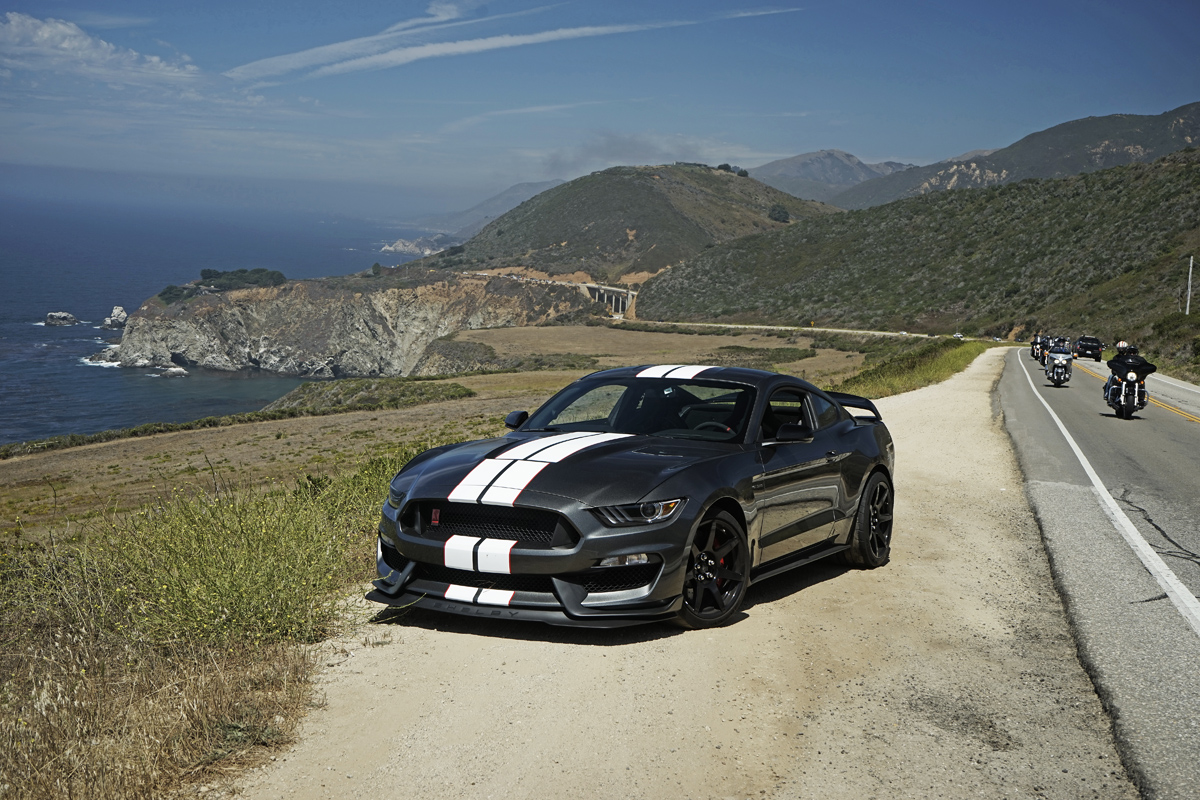Earlier this year in Detroit it became very apparent the domestic modern muscle car race was back on! With both Chevy and Dodge answering Ford’s call to arms with the respective Camaro and Challenger concepts, it won’t be long before America’s favorite sports car, the Mustang, comes under heavy fire from nostalgia-reviving monikers. Even with the 2006 Mustang Shelby GT500–the fastest production pony ever built–leading the charge, competition will soon be coming from all directions.
The Big Three can pack all of the nostalgia they can muster into reviving dead brands, but they’re facing a much bigger fight in a formidable group of foreign car makers that, collectively build some of the most incredible street-legal performance cars anywhere. Subaru has the turbo AWD WRX STi, Nissan the Nismo 350Z, Mazdaspeed vehicles are synonymous with zoom-zooming, Toyota has TRD (Toyota Racing Development) backing its performance vehicle range, and even Mitsubishi continues to extend the Lancer Evolution’s bloodline with plans to release the 10th-gen Evo soon.
Some of these are factory-enhanced while others are simply improved, or modified, by their brand’s motorsports arms to cater to a limited niche market. Besides their being modern performance benchmarks, the most important commonality amongst cult cars like these are that they’re all worshiped by legions of incredibly loyal enthusiasts the world over. With followings large and small, huge in some cases, domestic muscle makers are facing several small battles over technology, market share and overall acceptance, for example. The war will be won though in the strength of the car communities they’re helping create.
It would be downright irresponsible to overlook the fact that North American manufacturers have significant enthusiast audiences’ right in their own backyards. GM is heavily involved in motorsports with its GM Racing extension along with Dodge and its SRT (Street Race Track) division; and, both offer countless performance parts for several enthusiast niches. Another name, Carroll Shelby, is synonymous with building fast Fords. Along with the revived GT supercar, the 2006 GT500 is available through its network of SVT (Special Vehicle Team) dealers.
Niche vehicles are important in carving out communities as much as they are to be heralded for their performance and contribution to automotive lore. The new Mustang has been widely accepted and is enjoying renaissance in popularity. Not if, but when the Camaro and Challenger go on sale, the local drag strips will be busy for months as the import versus domestic battle heats up.
There’s been another revival of sorts in the modern muscle market–one that promises to continue the tradition of lightweight roadsters Shelby started with AC in 1962 with the aluminum-bodied, two-seat AC Cobra. Shelby brought the idea of to AC but sold the Cobra name to Ford in ’65, hence the Mustang Cobras that came later. Ford and Shelby are responsible for last year’s Cobra Concept car as well; but, it is Britain’s oldest sports car maker, AC Cars, that’s staking a claim in Connecticut where AC Cars Manufacturing (USA) Inc. will assemble its Ace, MKVI and Mamba models at a new 40,000 sq.-ft. manufacturing facility in Bridgeport – the same site where in 1895, one of the first American cars was built.
Built on the Ace chassis, Shelby’s AC Cobra is one of the most famous cars in the world; and one of the most sought after scratch-build project cars as the components have always been readily available. People go nuts when they see a Cobra–one of the most dangerously overpowered cars built during the golden age of hot rods–thanks to its unforgettable aggressive styling and availability of several engines including the 427cc Ford V8 and Chevy V8, the former being more widespread.
After a move to Malta in 2005, AC Cars successfully revived its successful MK models with a limited production run of an all-new AC roadster: the AC MK5, or Mark 5. Using the original car’s body molds, the MKV features a thoroughly-modern lightweight composite body constructed from hand-laid carbon fiber, balsa wood and epoxy resin that gets baked at 1,200 degrees Fahrenheit before marrying to an original-type steel chassis. The “stronger than steel, lighter than aluminum” shell, will never rust and promises to yield an incredibly responsive ride through its BTR Hydratrac rear axle and adjustable suspension.
The 2,750-pound (1,250 kg) carbon convertible has a variety of pushrod V8 engine options, including a 345-hp engine supplied by Ford Racing. Power ranges from 300 to 500 hp, depending on the customer’s specs. The MKV is imported without an engine or gearbox for around USD $65,000. It has full electronic instrumentation, a leather, carpeted interior, 62-Liter fuel cell (enormous for a car like this) plus a removable soft top and leather toneau cover.
“This new series AC MKV is in essence a modern recreation of the original AC Cobra,” said Alan Lubinsky, AC Cars Chairman and CEO. He also said the success of the Mini Cooper, has impressed the company, which has sold cars in the U.S. sporadically in recent years.
The AC Cobra, and therefore the MKV, makes my top 10 list of cars I’d like to own and the new carbon-bodied MKV iteration is my underdog favorite modern muscle head. What it lacks in size is made up for in sheer presence and white-knuckling performance. Why wait for the Camaro or Challenger, or anything else for that matter, when you could have the icon of iconic cars in a fraction of the time? Like it did over 40 years ago, AC’s MKV has the potential to rule today’s roads, and the bullies that drive on them.
